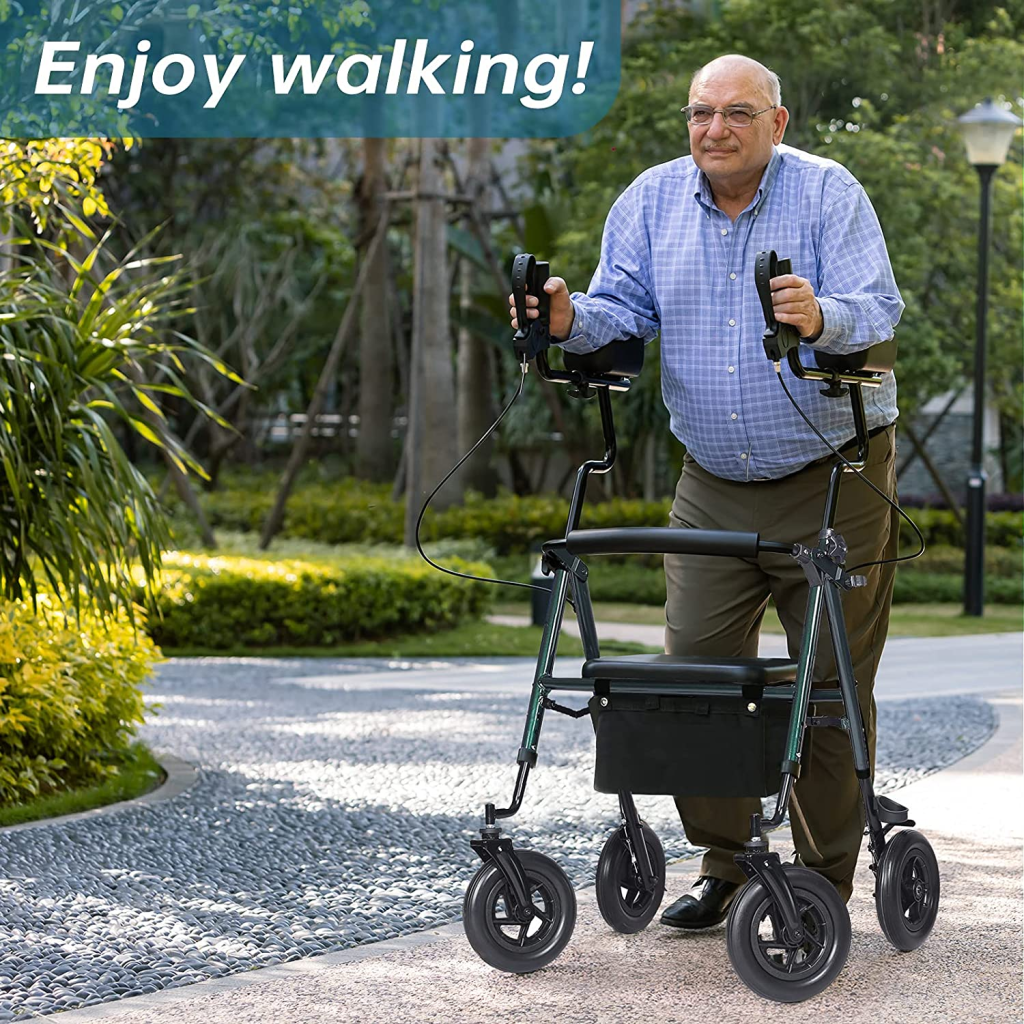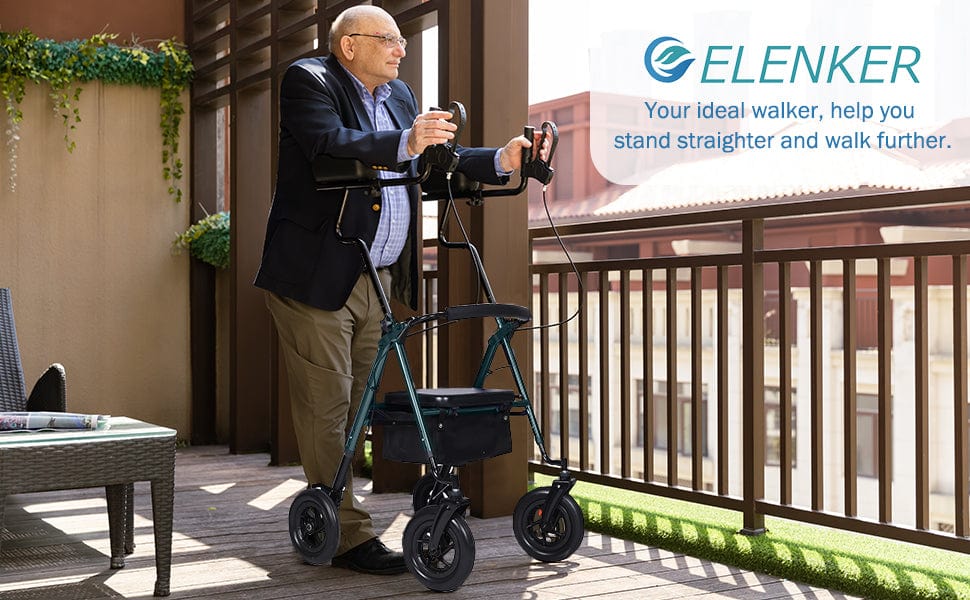Recovering from a stroke can be one of the biggest challenges someone ever faces. It’s not just about healing physically—it’s about rebuilding independence, regaining confidence, and learning to move through the world again. For many stroke survivors, walking becomes difficult due to weakness, balance problems, or muscle stiffness on one side of the body. That’s where mobility aids like standing walkers (also called upright walkers) come into the picture.
What Is a Standing Walker, Anyway?
Before we get into the nitty-gritty, let’s clear up what we mean by a standing walker or upright walker. You’ve probably seen the traditional walkers that require you to hunch over a bit, right? Well, upright walkers for seniors are a step up (literally). These walkers let you walk in a more natural, upright position. Instead of bending over and straining your back, you stand tall while resting your forearms on padded armrests.
Most stand up walkers also come with wheels, brakes, storage compartments, and even a built-in seat—yep, a stand up walker with seat so you can take a break whenever you need. Talk about practical.

Why Do Stroke Survivors Struggle with Mobility?
A stroke can mess with how your brain communicates with your body. Depending on which part of the brain is affected, you might experience:
- Weakness on one side of your body (hemiparesis)
- Balance and coordination issues
- Foot drop (where your toes drag when you walk)
- Fatigue and low endurance
- Muscle stiffness or spasms
All of that can make walking feel scary or unsafe. That’s where having a solid support system—like a stand up walker—can be a total confidence booster.
Why Standing Walkers Can Be a Great Fit
Let’s dive into the reasons why standing walkers might be especially helpful for stroke recovery.
1. Promotes Better Posture
Traditional walkers often force users to lean forward, which can lead to poor posture and back pain. An upright walker supports your arms and encourages you to stand tall. For stroke survivors who might already be compensating with one side of their body, better posture makes a big difference.
2. Reduces Fall Risk
Balance is a big issue after a stroke. Upright walkers with seats provide steady support, and most models come with hand brakes that are easy to grab if things feel unsteady. Plus, if fatigue kicks in (which is super common), you can sit down and rest right away.
3. Builds Confidence
Regaining independence is a huge emotional milestone after a stroke. A stand up walker gives people the ability to move around more freely—whether it’s walking around the house, getting out to the garden, or taking a lap around the block. That kind of freedom is a big deal.
4. Improves Arm and Leg Coordination
With forearm rests and ergonomic handles, standing walkers encourage a more natural arm-leg rhythm as you walk. For someone re-learning how to walk post-stroke, this can help reestablish that “normal” walking pattern.
5. Comfort + Convenience
Many upright walkers for seniors come with extras like storage bags, cup holders, and—you guessed it—a comfy seat. So, if you’re out running errands or just going for a stroll, you don’t have to worry about getting stuck without a place to rest or stash your stuff.
Are Standing Walkers Right for Everyone?
As awesome as these walkers are, it’s important to remember that not every stroke survivor has the same needs. Some people might have limited upper body strength, which can make using the forearm supports tricky. Others might need a physical therapist’s guidance to get comfortable using a walker safely.
If someone’s recovering from a more severe stroke and is just starting rehab, they might start with a different kind of mobility aid and then “graduate” to a stand up walker with seat once they’re stronger.
Always a good idea to check in with a physical or occupational therapist—they can help decide if a standing walker is the right fit and make sure it’s set up properly.
What to Look for When Choosing a Stand Up Walker
Thinking of getting one? Here are a few things to keep in mind when shopping for the best upright walker:
- Adjustable arm height: Super important for comfort and proper posture.
- Wheels built for indoors/outdoors: Bigger wheels = smoother ride.
- Comfortable seat: A padded seat makes resting a lot more pleasant.
- Easy-to-use brakes: Safety first!
- Foldable design: Great for storage or taking it in the car.
There are tons of models out there, so finding the best upright walkers with seats is mostly about what works for your specific lifestyle and recovery needs.
So, are standing walkers suitable for people recovering from a stroke?
In many cases—absolutely. They can help improve posture, reduce the risk of falls, support independence, and even boost confidence along the recovery journey. Like any mobility aid, it’s not a one-size-fits-all solution, but for a lot of stroke survivors, these walkers can be a seriously helpful part of getting back on their feet.
If you or a loved one is recovering from a stroke and thinking about trying a stand up walker, don’t hesitate to talk to a healthcare professional. A little guidance goes a long way when it comes to finding the support that fits just right.
